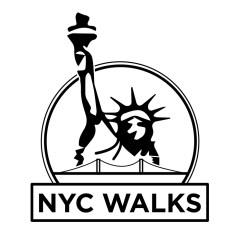PC Statues – Part II: William Tecumseh Sherman and Fiorello LaGuardia

What will be next? Perhaps, we must remove the statue of Dr. Martin Luther King from the Washington Mall because he an adulterer and plagiarist. Or perhaps William Tecumseh Sherman, also known as the Sherman Memorial or Sherman Monument, located at the other end of Central Park’s 59th Street traffic circle. It is an outdoor sculpture of William Tecumseh Sherman by Augustus Saint-Gaudens. Cast in 1902 and dedicated on May 30, 1903, the gilded-bronze monument consists of an equestrian statue and an allegorical female figure, Victory, set on a Stony Creek granite pedestal designed by the architect Charles Follen McKim. He is considered the greatest Union general after Ulysses S. Grant. Although named after a great Indian warrior, he declared, “The more Indians we can kill this year the fewer we will need to kill the next, because the more I see of the Indians the more convinced I become that they must either all be killed or be maintained as a species of pauper. Their attempts at civilization is [sic] ridiculous.” http://www.plpow.com/Atrocities_QuotesFromSherman.htm
Or how about his comrade, Philip Sheridan? General Philip Henry Sheridan, also known as the Sheridan Memorial, is an outdoor bronze sculpture of Philip Sheridan by Joseph Pollia, located in Christopher Park in Manhattan, New York. The statue was installed in 1936. He also said the politically incorrect statement, “The only good Indians I ever saw were dead,” was transformed into popular lore, “The only good Indian is a dead Indian.”
Or Benjamin Franklin or George Washington? They were slave owners also. Located opposite City Hall Park, at the intersection of Park Row and the Brooklyn Bridge approach, this impressive sculpture of American statesman, scientist, inventor, philosopher, and journalist Benjamin Franklin is by German-born sculptor Ernst Plassman (1823–1877). The sculpture was dedicated in 1872.
This striking equestrian sculpture of George Washington Commander in Chief and first President of the United States (1789–97) serves as the centerpiece of Brooklyn’s Continental Army Plaza. Located at the approach to the Williamsburg Bridge, the statue was dedicated in 1906, and was presented to the City by Congressman James R. Howe and the Committee of Supervision and Construction. It was sculpted by Henry Mervin Shrady (1871–1922), a life-long New Yorker, who was commissioned to make the statue after winning a design competition in 1901. Or how about Unions Square in Manhattan? On June 5, 1856, the Washington statue by Henry Kirk Brown was installed on a simple granite base designed by Richard Upjohn. A committee of ordinary New Yorkers had commissioned the statue.
Perhaps we can take a clue from South Africa. The statues of Boer heroes are still honored for their positive contributions while their negative are also not forgotten. Meanwhile, South Africa has moved on and put up statues of new heroes.
Then there are changing political positions of the issues of the day. Fiorello LaGuardia and Eleanor Roosevelt were opposite sides on whether or not the Japanese-Americans on the West Coast should have been interned in camps during World War II. In 1943, Metropolitan Life announced plans to build Stuyvesant Town in Manhattan with a stated policy of not renting to blacks. LaGuardia approved the development anyway — and was roundly criticized by the black community and many of his usual supporters for declining to intervene. The day he signed the contract he said he hoped the courts might intervene to reverse the policy. LaGuardia also supported the internment of Japanese-American. He’s remembered with a bust on the Lower East Side and LaGuardia Airport, and a statue at LaGuardia Place in Greenwich Village.
Unveiled in 1994 in Greenwich Village, this dynamic sculpture of Mayor Fiorello H. La Guardia (served 1933-1945) in Fiorello H. LaGuardia Plaza on West Broadway is by the well-known sculptor Neil Estern La Guardia, the son of a United States Army bandleader, was born on December 11, 1882, at 177 Sullivan Street in Manhattan’s Little Italy. In the early 1990s, the Friends of La Guardia Place raised funds to renovate the barren public plazas along the east side of the street. The buildings along this stretch had been razed decades earlier to make way for the never built Fifth Avenue South connector to the unrealized Lower Manhattan Expressway. As part of these landscape improvements, the Friends commissioned this sculpture of La Guardia for the neighborhood in which he was raised. In 1986, the monument committee, headed by Al McGrath, selected Neil Estern’s active full-figure representation, in which La Guardia is shown gesticulating in mid-stride, with his mouth wide open in speech. Brooklyn-based sculptor Eastern, formerly President of the National Sculpture Society, also created the statue of John F. Kennedy in Grand Army Plaza, Brooklyn, as well as a sculpture of Franklin Delano Roosevelt and this dog Fala, at the FDR Memorial in Washington, D. C. https://www.nycgovparks.org/about/history/historical-signs/listings?id=12183
A marble sculpture of the late Mayor Fiorello La Guardia was unveiled in 1964 then the gleaming new terminal of the Queens airport that bears his name. The occasion was the silver anniversary of the first scheduled flights at La Guardia Airport on December 2, 1939. Mrs. Marie La Guardia, widow of the mayor, helped current Mayor Robert Wagner, Jr. to unveil the sculpture, an 8foot‐high bust, by. Luis A. Sanguino of New York.
In 1957, the widow of the former mayor, once more helped the Fiorello LaGuardia Memorial Association to dedicate a bronze bust on top of a granite pedestal, at the Little Flower Playground, at Cherry and Jefferson Streets, in the Lower East Side. This was near the newly established LaGuardia Houses, a public housing project of a thousand families that replaced a slum in 1954.
NYC Blog 8 © 2017 by Dr. Philip Ernest Schoenberg #ghost
